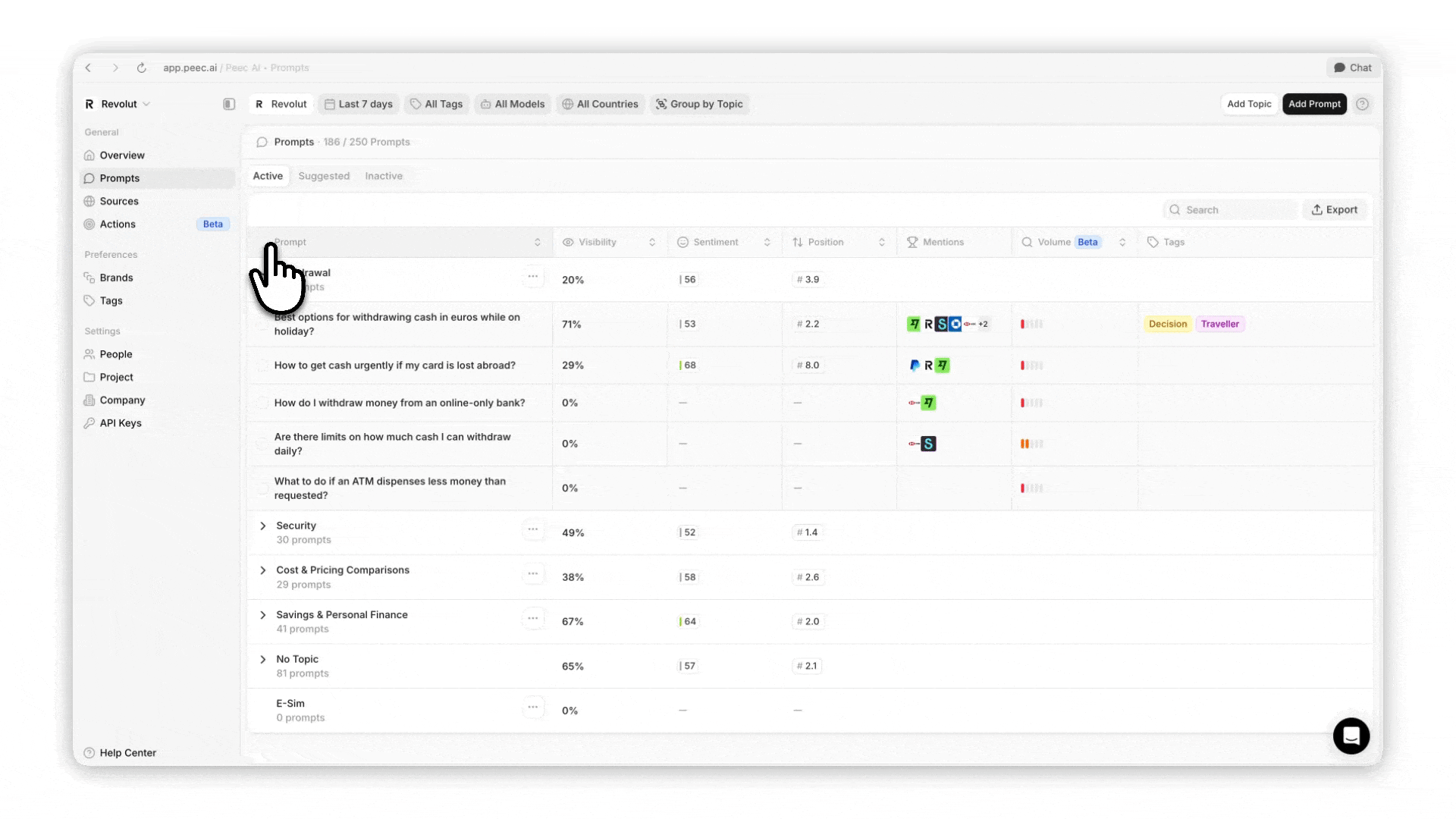As your prompt collection grows, you need systematic ways to handle them at scale. Prompts operate at different levels — active, inactive, and deleted — each serving different purposes.
Breaking prompts into organized chunks becomes essential because these groupings form the foundation of your analysis. Effective organization means you can quickly compare performance across categories instead of drowning in hundreds of individual prompt results.
Manage your prompts
We’ve made it easy for you to manage prompts with batch actions. Different ways you can select multiple prompts:- Click checkboxes next to individual prompts.
- Hold Shift and click to select several prompts.
- Tick the checkbox in the top row to select all prompts on the page.
Use search to filter prompts before selecting for easier bulk actions.
- Assign Tags: Add tags to multiple prompts simultaneously.
- Assign Topics: Move prompts to different topics (one topic per prompt).
- Deactivate: Turn multiple prompts inactive while still preserving data.
- Assign Tags and Topics: Same as above.
- Activate: Restore prompts to active status.
- Delete: Permanently remove prompts and all associated data. Only use if absolutely necessary.
Understanding prompt states:
- Active: We run the prompt against AI models once a day and include it in analytics.
- Inactive: We don’t run it anymore but keep all chat history and sources in analytics.
- Deleted: We remove everything associated with that prompt and act like it never existed.
Add your tags and topics

Understanding tags vs topics
Tags: One prompt can have multiple tags. For example: “email-marketing,” “enterprise,” “decision-stage,” “q4-campaign.” Tags give you flexible categorization for analysis:- Filter by single tags or combinations (with AND/OR conditions)
- Compare performance across categories
- Export data by tag groups
- Handle overlapping attributes (one prompt can be both “enterprise” and “decision-stage”)
- Track visibility at the topic level.
- Generate new prompt variations based on topics.
- Filter and segment prompts more effectively.
TLDR: Tags vs Topics
- Tags: Multiple per prompt, flexible filtering (like Gmail labels).
- Topics: One per prompt, visual folders (like file folders).

